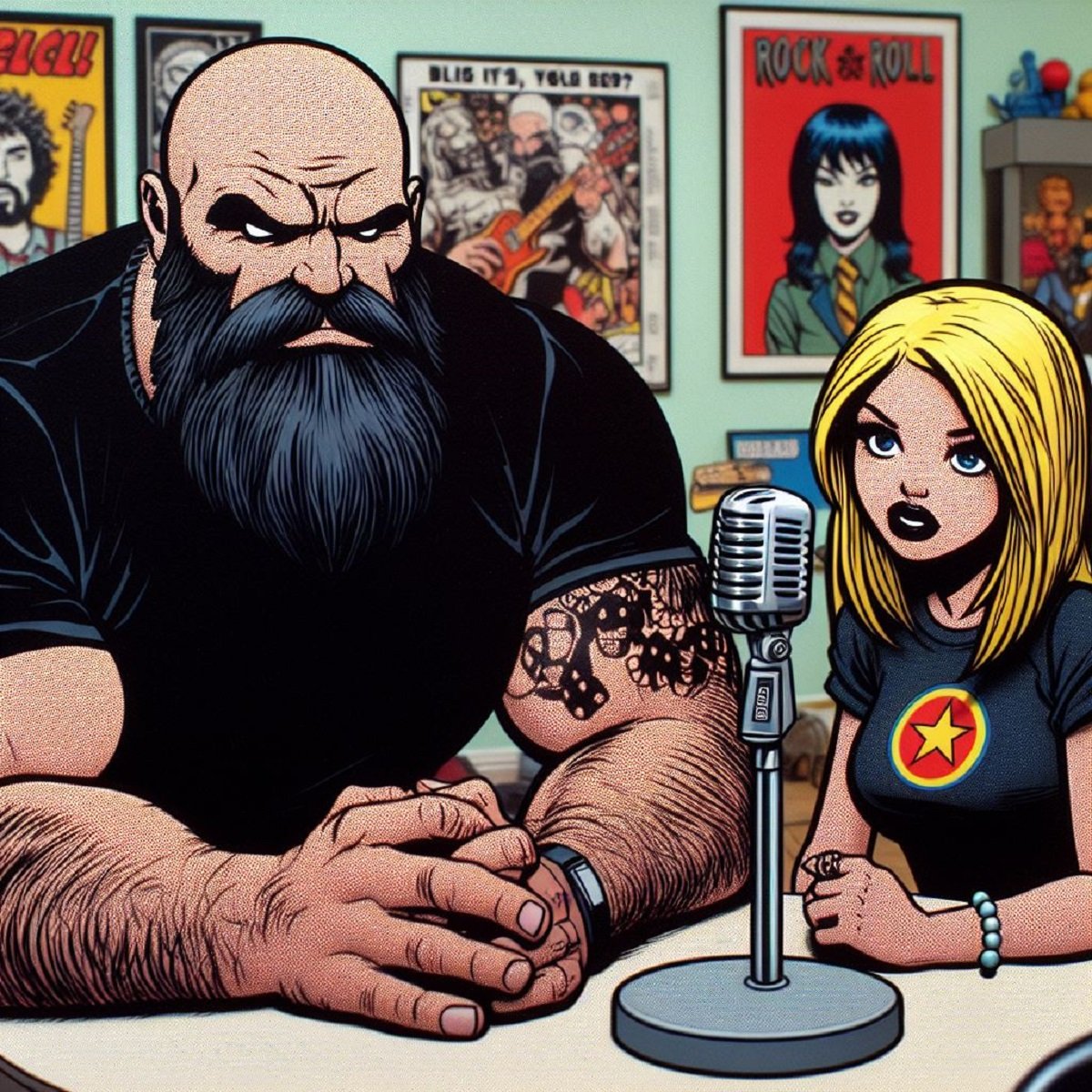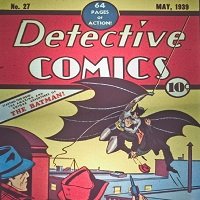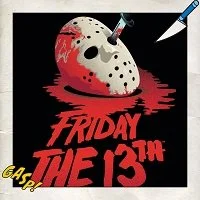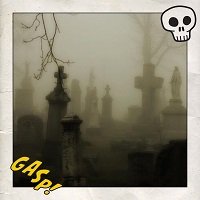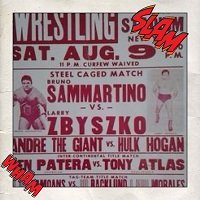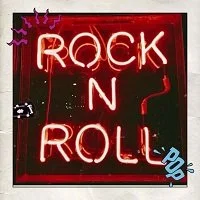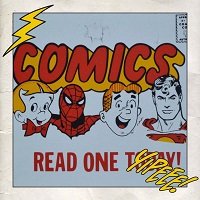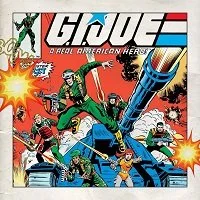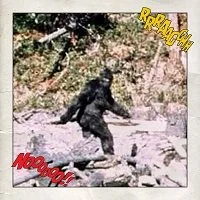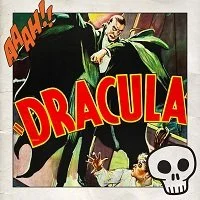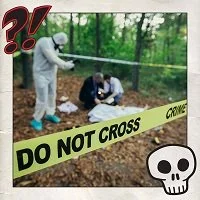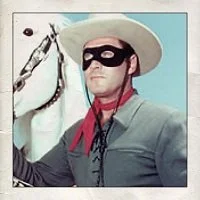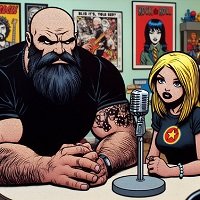DC Comics All Star Comics Issue 15 Review
By: Karl Stern (@dragonkingkarl, @wiwcool, karl@whenitwascool.com)
I have a love-hate relationship with the golden age of comics. I love the wonderful character designs. I love the simplicity yet underlying complexity of the World War 2 era. I love the vivid colors and the simplistic artwork. But the flip side to that is that these comics are often extremely wordy, take forever to get through, and the target audience back then was ten year old males and the stories are appropriately simple and silly.
DC Comic's All Star Comics features the Justice Society of America. Early team-up books aren't what they are in the modern age. It isn't heroes teaming together to fight greater evils or fighting against one another. Instead, they are glorified anthology books. At the beginning of almost every issue the heroes meet together and discuss a crisis and then split up to solve said crisis with very little interaction between team members.
Random bald scientist vs the Justice Society and their secretary.
Also, the power set of these heroes is vastly different from the modern era versions. They are often undefined or very often they show no super powers at all. It's simple punching and brawling. A few exceptions being Hawkman and The Spectre can fly and The Spectre can grow to a giant size. Besides that, basically these heroes are just normal people in costume.
At this stage the Justice Society is made up of Hawkman, Dr. Midnite, Starman, Atom, Sandman, Johnny Thunder, Spectre, Dr. Fate, and Wonder Woman. It should be noted that Wonder Woman is actually only the secretary for the Justice Society as women's liberation still had a long way to go in 1942. Also, I should warn that these World War 2 era comics use a lot of racist language and slang, especially toward the Japanese so buyer beware.
Issue 15 is dated February-March 1942 and is titled "The Man Who Created Images". I know, I know, in the internet era that is about as generic a description as one can have so let's give this issue a whirl and see if we can get through it.
This issue gives a different story telling device in that the issue opening meeting doesn't take place because all the various members are scattered around the world on a mission so they communicate via letter. Never mind that in previous issues they have communicated by far more efficient methods but like I said you've got to over look a lot in these Golden Age issues.
Wonder Woman receives these letters and uses them as an opportunity to... I swear I'm not making this up... form the Girl Friends of the Justice Society made up of Doris Lee (described as Starman's girl), Peachy Pet (Johnny Thunder's adopted daughter), Inza (Dr. Fate's "sweet heart"), and of course Wonder Woman herself. Wonder Woman has figured out from the letters that one man is behind whatever this case is (we haven't been told yet) and Wonder Woman and friends are going to solve it in order to "show up Hawkman and the boys". In order to accomplish this, for no apparent reason, they decide to dress up in their male counterparts clothing.
Girl power circa 1942
Dress up time for girls.
The rest of the issue is told through the letters written by the various heroes. First up is Hawkman. Again, Golden Age Hawkman doesn't seem to have any real powers other than the ability to fly. Hawkman in his civilian identity of Carter Hall witnesses a murder. While investigating the murder, Hawkman is attacked by some heavies. He beats them up and discovers the plot has something to do with stealing a synthetic rubber formula. Most of these Golden Age issues revolve around some sort of scientific discovery or war time espionage.
Hawkman tracks down leads after getting information from the thugs and visits "Tiny" Norman who doesn't believe he is the real Hawkman but instead and "image".
The next letter we see is from an unknown writer asking Wonder Woman what she would do if she saw a statue come to life. We get several panels of a white haired man trying to convince his friends and family that his statues are talking to him. They aren't buying it and he begins to doubt it himself until, of course, later in private one speaks to him again. Dr. Midnite gets word of this and begins an investigation. Dr. Midnite confronts some thugs who confess they are behind tricking the old man but insist they work for someone else. The boss is identified as "Brain Wave" and Dr. Midnite's story ends there.
Wasn't this the singing frog bit from warner brothers?
Johnny Thunder, who in the Golden Age is the comedy relief character for the Justice Society, stumbles into his own mystery at the museum. We get several unfortunate pages of Johnny Thunder and as usual it is his Lightning Bolt persona which solves the crime which Johnny Thunder accidentally calls up.
The next story focuses on the Atom. The Atom in the Golden Age is very different from the modern age Atom in that he doesn't seem to have any super powers. He simply seems to be a short but athletic college student who fights crime. We pick up the Atom's story at a baseball game. The Atom discovers that one of the players is throwing the baseball game by deliberately missing and decides to investigate. The player confesses to throwing games so his boss can gamble on them and also states that one of the people he saw in the game is actually an "image" and not a real person. Atom busts up the gambling ring only to find out that they also work for "Brain Wave".
Cursive writing. Bane of the MILLENNIALS.
The next story focuses on the Sandman. The Sandman has changed appearances drastically over the first 15 issues going from basically a private detective with a gas mask to a yellow costumed super hero. I haven't been reading Sandman's primary book Adventure Comics yet so I'm not sure if the radical change was explained there but it certainly wasn't in All Star Comics.
Again, like all the other heroes, the plot is the same. Sandman busts up a minor crime ring only to discover a bigger boss (Brain Wave) behind it. The phantom "images" this time are of an army which Sandman and his partner (swear this is his name) Sandy battle.
The next letter is Starman's version of events. He confronts a man who is tormented by his dead wife and small "little people" of some sort. Starman, of course, soon figures out that he is being afflicted by Brain Wave. Starman is one of the few heroes who actually has some discernible power with his Star Rod whose power is basically anything the story needs it to be. In this case, it can melt a gun.
The star rod basically exists to do whatever the story needs.
The Spectre is one of the most powerful entities of modern era DC Comics but in the Golden Age, again, his powers are much less defined. He can fly, transport himself across space, and grow to gigantic size. He is not, however, the near god-level being he is in the modern era. The Spectre's story begins with him foiling a bank robbery only to discover that these too are the phantom "images". He then sets out to investigate these phantoms. He tracks down a group of thugs behind the bank robbery and batters them into confessing that they too work for the mysterious Brain Wave.
The Spectre is a SIGNIFICANTLY less powerful hero than the modern version.
Dr. Fate's story is next. Dr. Fate in the modern era is a powerful magician but in the Golden Age his power set is very vague and like most of the other heroes he usually solves problems with his fists. Also, in 1942, Dr. Fate has temporarily gone to his half helmet instead of the full, classic version.
A thug named "Fan" Gregory came to Dr. Fate's tower and began banging on the wall in an effort to talk to the hero. He tells Dr. Fate that ghosts are trying to kill him and tries to enlist Dr. Fate into helping him. Dr. Fate helps him and along the way solves a bank robbery as well. Of course, the ghosts are the work of Brain Wave.
Finally, in this chapter we meet Brain Wave who is your standard Golden Age, bald, mad scientist who is gloating about foiling the heroes. We get Brain Wave's origin story and find out that since he was a child he has been able to animate his imagination and bring his thoughts to life as "images". He has now began using his extraordinary brain power for evil and crime.
We now revisit the Girl Friends of the Justice Society of America (groan) again as Wonder Woman leads them in a charge against Brain Wave's castle only to discover Hawkman and the rest of the Justice Society have beat them to it. The Justice Society then turns against the women and bind them in chains (the is LOTS of bondage in the golden age if you didn't know this already. Your grandma was a freak.) Obviously, Wonder Woman figures out that the "Justice Society" are more of the false images of Brain Wave just in time for the real Justice Society to burst in and help them capture him.
Girls in the golden age were tied up a lot. Weird.
Again, Golden Age stories are simplistic, silly, full of plot holes, and the heroes aren't powerful. The themes are also usually wrapped in Americana, although this issue avoided that entirely. There's no way I can give this a When it Was Cool grade because it's just not possible with most of this unsophisticated Golden Age stories and the art is very simple, though colorful. They are also quite long and often a chore to read through.
